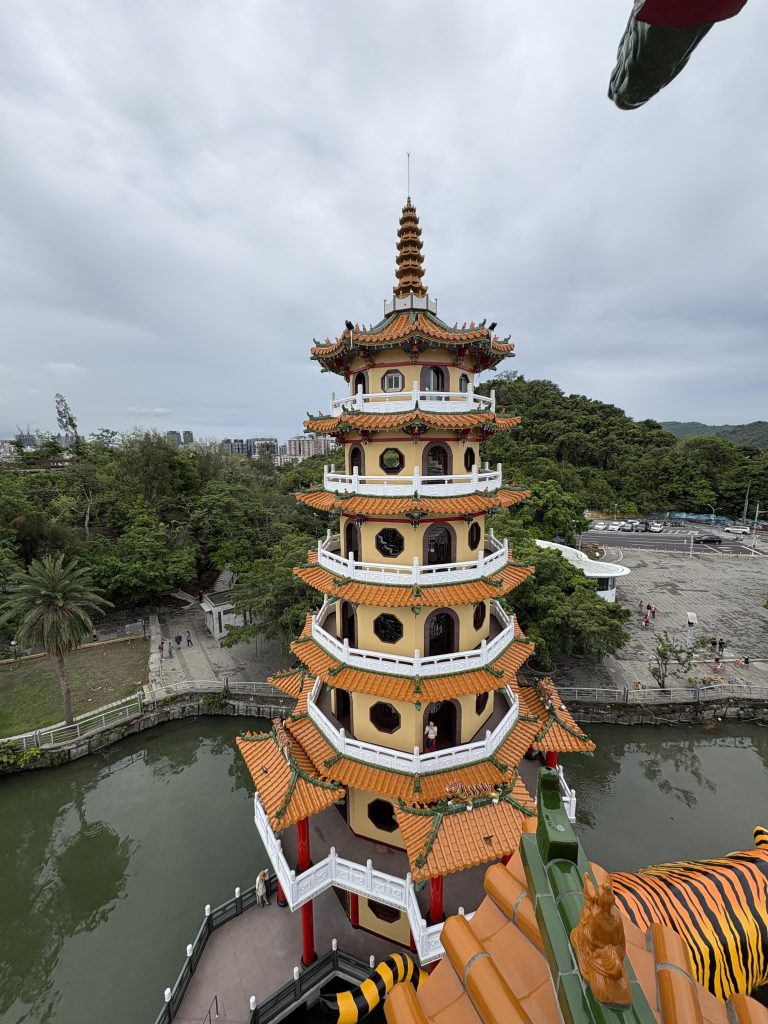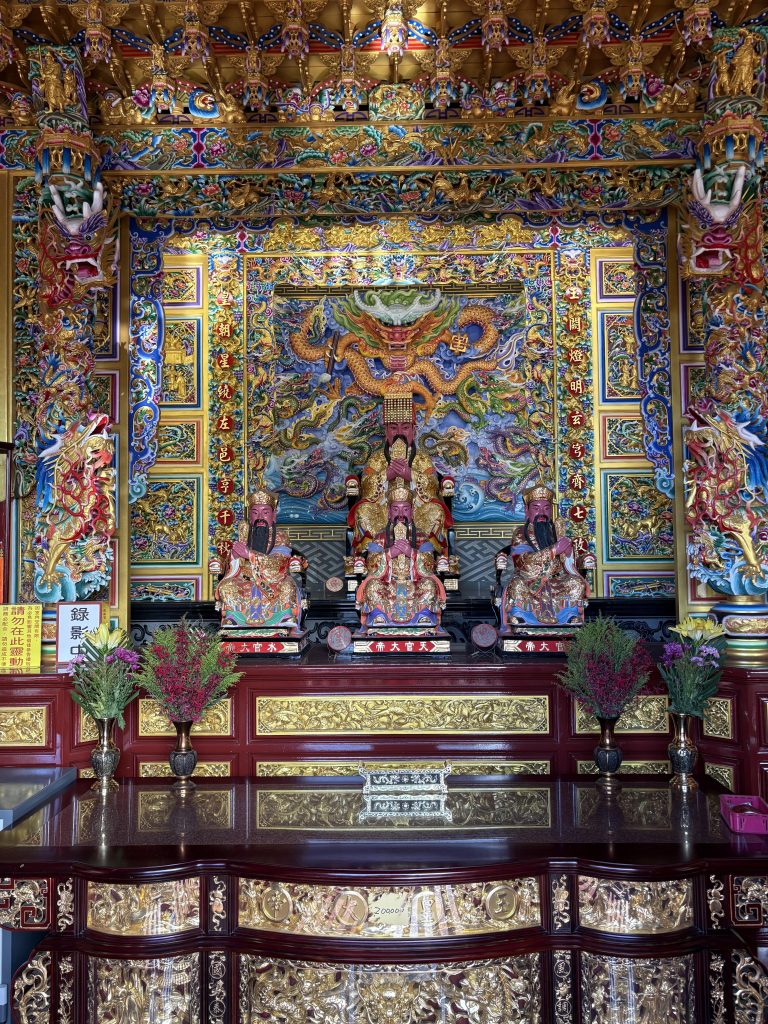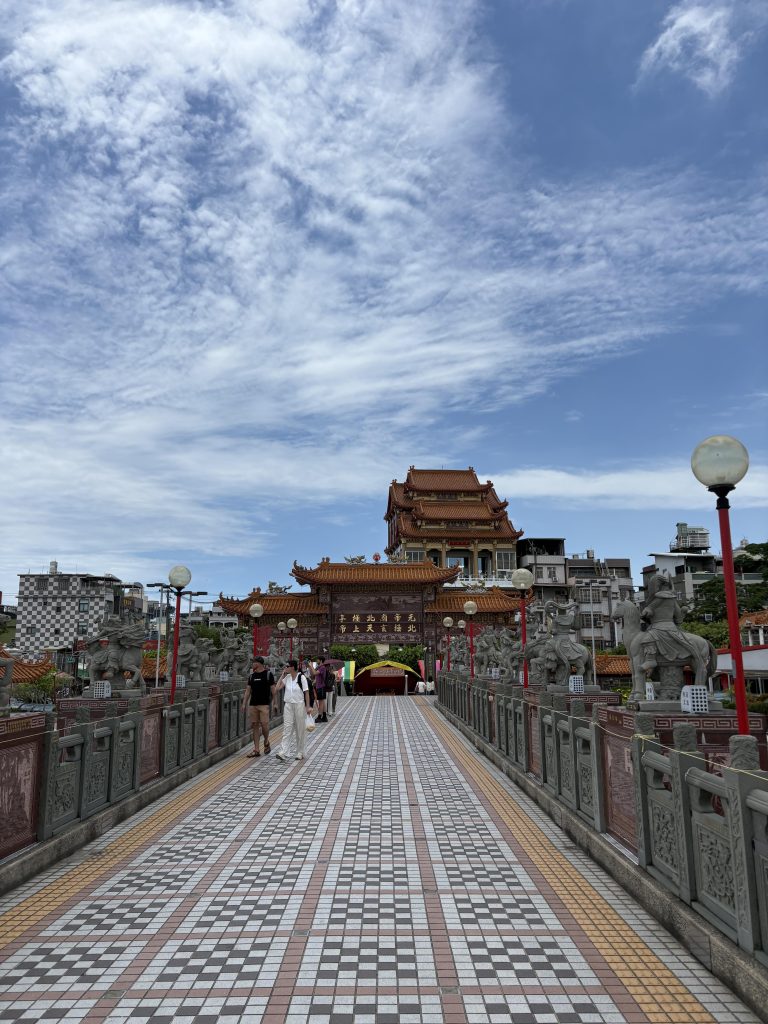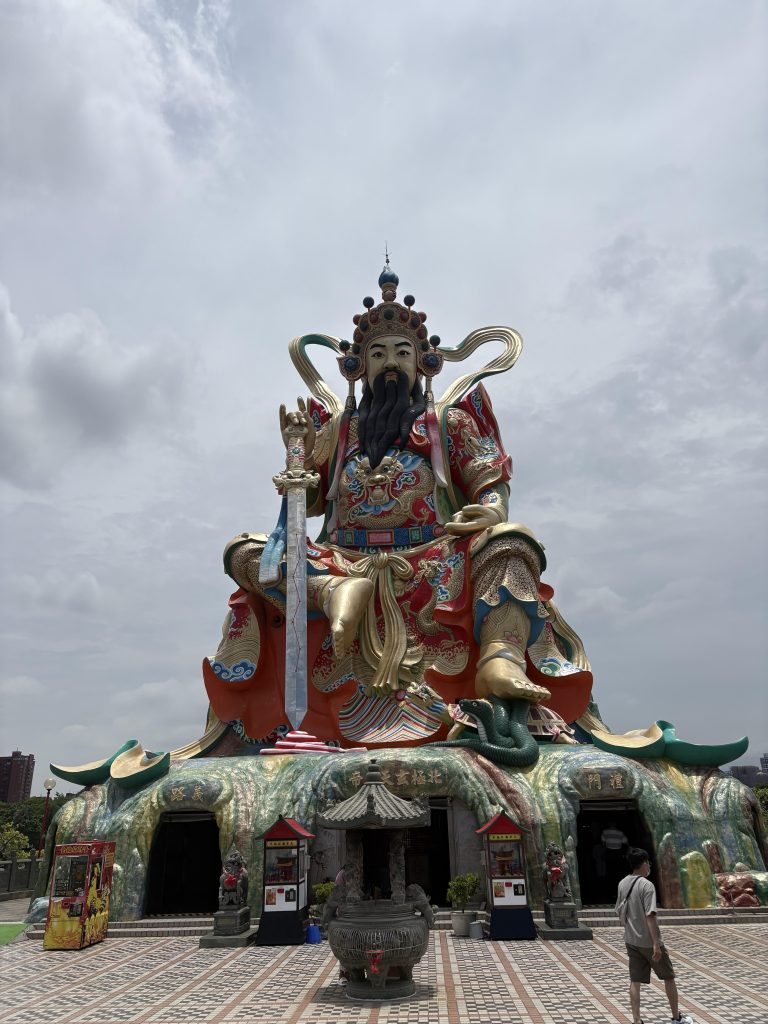Our group spent the majority of our day touring temples and other various religious sites around Kaohsiung. Our first stop was at the Dragon and Tiger Pagodas, which were my personal favorite. I really enjoyed being able to walk up and see a 360 view from different stories of the pagoda.
We walked along the river to other religious sights, including two temples. In the second temple, Professor Chen pointed out an interesting observation: many of the temples are very similar, yet appear very frequently in cities. Therefore, why are there so many of them? Professor Chen also questioned their monetary incentives, curious if they are primarily for-profit organizations.
I think temples are placed so frequently throughout cities for easy access. Although many of them have similar features, the more accessible they are to the general population, the more likely people are to engage with them. It makes sense to have religious centers placed frequently in convenient spaces since religion is such a significant part of culture here.
The monetary incentives of temples in Taiwan seems slightly more complex. In every temple we have been to, there have been boxes in multiple locations throughout the buildings to place donations. This is similar to how churches in the U.S. ask for an offering during service to cover costs for electricity, other amenities, and staff. Similarly, in the temples, the offering boxes typically have strategic placement. All of the offering boxes I have seen have been in front of areas where worshipers can take something, like rice, spirit money, or even a paintbrush. I believe the temples primarily use donations to purchase these items, pay their staff, and pay for electricity (many have running fans and lights, some even have bathrooms). I would think any leftover income would be put towards upkeeping and renovating the temples. We have seen many temples undergoing renovations, with some parts even closed off to the public. This is likely very costly due to the intricate infrastructure of each building we’ve visited. If there is still leftover income after that, I would assume it would be put toward expanding religious practices to other areas, holding special events, or other community building. I’d especially be interested to know what they do with their income because most temples in Taiwan are generally tax exempt, so they don’t have significant costs that many other businesses have.
On our last excursion for the day, we drove by a Confucius temple. Our tour guide, Peter, explained how in Taiwan, Confucianism isn’t generally recognized as a religion, but it is more commonly considered a philosophy. The teachings of Confucianism stem from Confucius himself, and revolve around a human center and the relationship between human and human. It also aims to define each person’s role in society. A regressive aspect of Confucianism is that they tend to have more restrictions on women. Although we were not able to enter the temple today, I am looking forward to seeing and learning more about Confucianism when we are back in Taipei and visit a Confucius temple.



